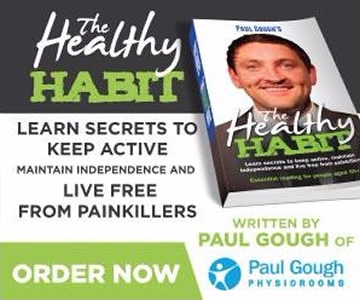Introduction: When the Season Changes, So Does the Body
Autumn has a special way of shifting the rhythm of life. The days become shorter, the mornings arrive cooler, and the leaves start to fall in their golden tones. For many, it’s a favourite season – long walks in the crisp air, weekends in the garden, or simply enjoying the cosiness that comes as the year winds down.
But for those living with back discomfort, autumn can also feel like a hurdle. The cooler weather often highlights stiffness, and the demands of the season – raking leaves, carrying shopping for hearty meals, or spending longer periods indoors – can place extra strain on the body.
It can be disheartening when the season you’d like to embrace instead reminds you of your limits. Yet, autumn also brings an opportunity. It’s a time to pause, reset routines, and take intentional steps that can support both comfort and movement.
In this blog, we’ll explore why back pain often feels worse in autumn, practical tips for managing it, and ways to keep enjoying the season without letting discomfort hold you back.
Why Autumn Can Make Back Pain More Noticeable
1. The Impact of Cold Weather
Cooler temperatures can make muscles tighten and joints feel stiffer. The body may take longer to “warm up” in the morning, and activities that felt easy in summer can suddenly feel more challenging.
2. Reduced Activity Levels
With darker evenings and cooler days, people naturally move less. Less activity can mean muscles lose flexibility, leading to more stiffness and discomfort in the back.
3. Seasonal Tasks
Autumn is often a season of physical chores – raking leaves, lifting boxes as households prepare for winter, or bending down for planting bulbs in the garden. These repetitive or heavy movements can easily place extra strain on the spine.
4. Longer Periods Sitting
Cosy evenings are one of the joys of autumn, but more time spent on the sofa or in less supportive chairs can affect posture and cause additional back tension.
Everyday Habits That Can Support Back Comfort
Stay Warm
Keeping muscles warm can reduce stiffness. Layers, warm showers, and even using a hot water bottle can make a noticeable difference.
Keep Moving, Even in Small Ways
Short bursts of movement are often easier to manage than long exercise sessions. A five-minute walk, gentle stretches, or rolling the shoulders while making a cup of tea can all help the back stay mobile.
Pay Attention to Posture
It’s easy to sink into the sofa or sit for too long when the evenings get darker. A simple posture check – sitting tall, feet flat, shoulders relaxed – may help keep the back supported.
Hydrate and Nourish
Even though the weather is cooler, hydration still matters. Water supports muscles and joints, while balanced meals provide the fuel needed for energy and recovery.
Pace Seasonal Tasks
Whether gardening, decorating, or carrying shopping, it’s important to pace yourself. Break bigger tasks into smaller steps and avoid prolonged bending or lifting without pauses.
Gentle Movements to Try This Autumn
- Cat-Cow Stretch – On hands and knees, arch and round the back gently to mobilise the spine.
- Seated Twist – Sitting tall, rotate gently to one side, then the other, holding for a few breaths.
- Knee-to-Chest – Lying on your back, bring one knee towards the chest, then switch sides.
- Shoulder Rolls – Roll the shoulders forwards and backwards to ease upper back and neck tension.
- Gentle Walking – Regular short walks help keep the spine and muscles active without overloading them.
These movements don’t need to be intense; the goal is to keep the body flexible and to prevent stiffness from building.
How to Keep Enjoying Autumn Despite Back Discomfort
Autumn doesn’t need to be defined by limitations. Here are ways to make the most of the season:
- Plan Walks for Midday: The body is usually less stiff after moving for a few hours, so walks in the warmer part of the day may feel easier.
- Modify Outdoor Chores: Use tools with longer handles, share tasks with others, and pace your activity to prevent overstrain.
- Create Cosy, Supportive Spaces: Choose supportive chairs, use cushions for lumbar support, and avoid staying in one position too long.
- Blend Rest with Activity: Balance cosy downtime with gentle, regular movement to keep your back steady.
When to Consider Professional Support
If back discomfort is ongoing or starts affecting daily routines, physiotherapy may provide additional guidance. At Paul Gough Physio Rooms, our team works with people every day to explore how posture, movement patterns, and small lifestyle changes can influence back health.
Physiotherapy isn’t about quick fixes or grand promises. Instead, it’s a supportive space to understand what’s happening in your body and to develop strategies tailored to your needs. Whether that’s hands-on care, personalised exercises, or simply advice on posture and habits, physiotherapy can be part of building long-term confidence in movement.
Conclusion: Autumn as an Opportunity
Back pain can feel frustrating, especially when it stops you from enjoying the crisp air, vibrant leaves, or cosy evenings. But autumn doesn’t have to be about limitations. It can be a season of awareness, where small, steady steps create a foundation for comfort and confidence—not just now, but through the winter ahead.
Remember: progress isn’t about perfection. It’s about showing up for yourself in the little ways that add up over time.
👉 Book a Free Discovery Visit at Paul Gough Physio Rooms today and take the first step towards moving into autumn with ease and confidence.
📞 Call 01429 866 771
🌐 www.paulgoughphysio.com/request-a-call-back


